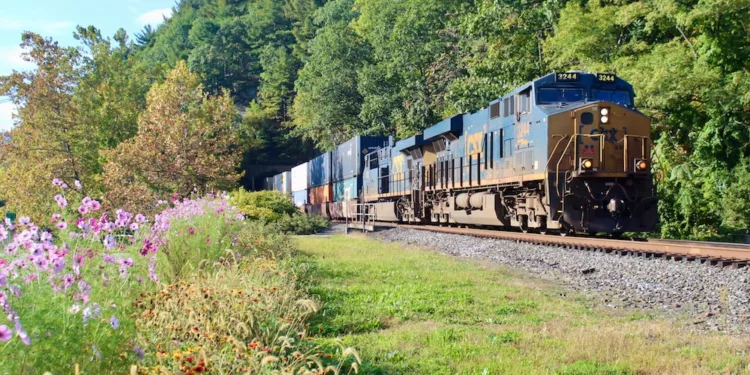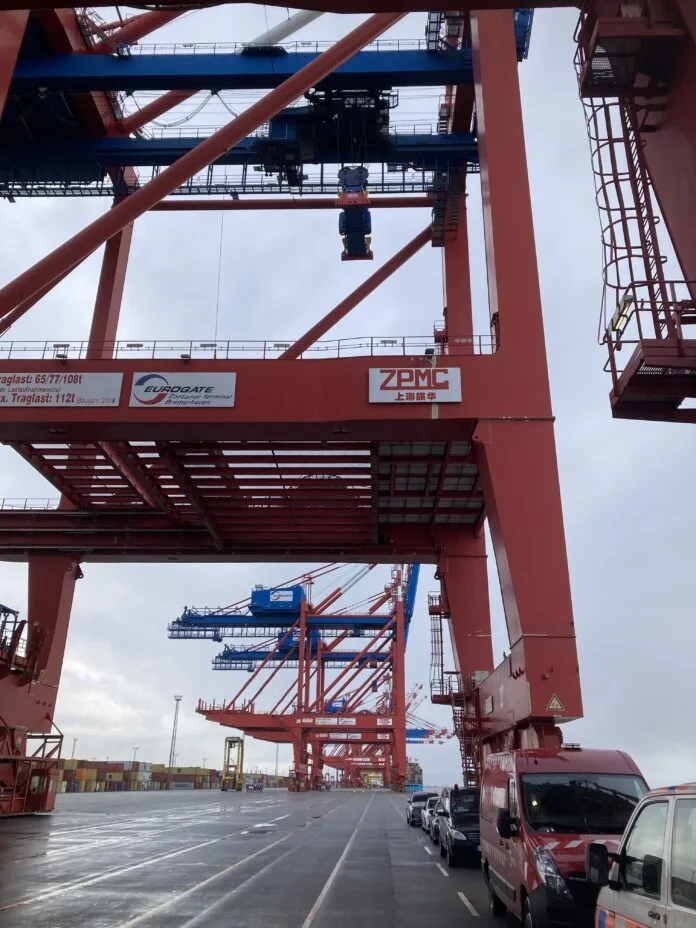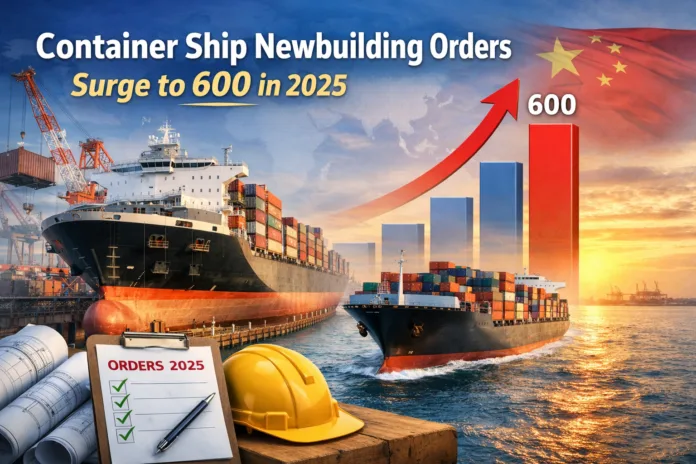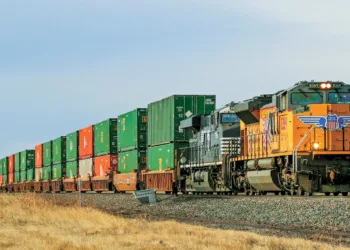U.S. railroad traffic levels have been stagnant over the past 15 years because the Class I railroads were obsessed with profit margins while neglecting growth opportunities, CSX CEO Joe Hinrichs says.
Hinrichs, speaking at an investor conference last week, was asked why railroads have struggled to grow, even setting aside the long-term decline of coal traffic.
“Maybe it’s a little easier for me to opine on it because I wasn’t here for most of that time period,” Hinrichs says. The former Ford and GM executive came to the rail industry when he was named CSX’s CEO in September 2022.
“Let’s be honest. The last 10, 15 years, the main focus of the industry has been restructuring the business to get a lot more efficient and to create better margins, which in itself isn’t a bad thing,” Hinrichs says.
The average Class I railroad operating ratio fell from 70.8% in 2012 to a record low 59.9% in 2021.
“But that was the No. 1 focus, and you can see all that activist activity and all of the things that went on to drive that obsession with O.R. improvement, which again, unto itself is not bad,” Hinrichs says. “But there wasn’t, at the same time, the same drive to grow volume.”
The only incentive for railroad management teams over the past decade-plus, Hinrichs says, has been to reduce the operating ratio.
“I’m not criticizing it because look at the efficiencies and the operating margins that we have that we didn’t have 10, 15 years ago,” Hinrichs says. “But if your only pursuit is every quarter trying to show a little better O.R., then intermodal business is not going to be your priority, or other truck-competitive carload business, let’s say, because the pricing dynamics are different.”
Railroads face intense Wall Street pressure to maintain profit margins. Since 2012, activist investors have targeted railroads with lagging operating ratios at least five times. Most recently, Ancora Holdings in August urged the CSX (NASDAQ: CSX) board to make management changes due to, among other things, a slide in the railroad’s operating ratio.
Hinrichs noted that over the 12 months ending June 30 CSX has experienced a $1.2 billion decline in operating income compared to 2022, due to a combination of one-time items and factors beyond the railroad’s control, such as a sharp decline in export coal revenue.
Export metallurgical coal prices are tied to global benchmarks. The sinking coal revenue alone was a 2.5-point hit to CSX’s operating ratio.
“Accountability isn’t an awful thing,” Hinrichs says. But if investors remain fixated on the operating ratio, then railroads will remain stuck in no-growth mode, he says.
“We’re going to get the same thing over and over again. We’re going to talk for 10 years more about, ‘It’d be nice if we could grow, but this quarter you better have 40-plus percent margins,” Hinrichs says.
Railroads need to prove they can maintain profit margins and bring on new volume, Hinrichs says. “We can do both. I believe we can, and I believe we have an opportunity right now in this industry to demonstrate that,” he says.
Part of the challenge is that lower-margin intermodal traffic is growing faster than high-margin carload business.
“We’ve got to be able to demonstrate you can continue to run a very efficient railroad, optimize your margins, pricing, everything on the carload business, and grow and go after that truck-competitive business, whether it’s carload or intermodal,” Hinrichs says.
CSX has shown that it’s possible, Hinrichs says, citing the fact that by the end of 2024 CSX was the only Class I whose volumes returned to pre-pandemic levels, with growth in both intermodal and merchandise business.
This profitable growth, Hinrichs says, should boost earnings and enable the railroad to return more capital to shareholders while expanding its stock multiple. “That’s the thesis,” he says.
One way to gain new volume, he says, is through interline partnerships that can tap new markets and provide better service for the traffic currently exchanged between CSX and other railroads.
“We have motivated players to grow the pie,” he says.
Hinrichs spoke at the Morgan Stanley Laguna Conference.
Subscribe to FreightWaves’ Rail e-newsletter and get the latest insights on rail freight right in your inbox.
Find more articles by Stuart Chirls here.
Related coverage:
Union Pacific, Norfolk Southern roll out new domestic intermodal
Union Pacific CEO pitched Trump on National Guard deployments
Rail freight slips in latest week
Trump nominates rail consultant Kloster to STB
The post CSX CEO: Obsession with profit margins stunting railroads’ growth appeared first on FreightWaves.



















